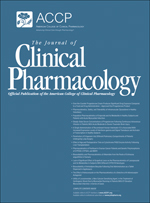
“Excitotoxicity and imbalance of sodium and calcium homeostasis trigger pathophysiologic processes in cerebral ischemia which can accelerate neuronal death.
Neuroprotective role of cannabidiol (CBD), one of the main non-psychoactive phytocannabinoids of the cannabis plant, has attracted attention of many researchers in the neurodegenerative diseases studies.
The present investigation was designed to determine whether cannabidiol can alleviate the severity of ischemic damages and if it is able to exert its anti-excitotoxic effects through sodium and calcium regulation.
The present results indicate that administration of cannabidiol (100 and 200 ng/rat) in the MCAO-induced cerebral ischemia caused a remarkable reduction in neurological deficit, infarction, brain edema, and BBB permeability in comparison with the vehicle group. Up-regulation of NCX2 and NCX3 in cannabidiol-received groups was also observed.
These findings support the view that the reduction of ischemic injuries elicited by cannabidiol can be at least partly due to the enhancement of NCX protein expression and its cerebro-protective role in those cerebral territories supplied by MCA.”
https://www.ncbi.nlm.nih.gov/pubmed/27856160









